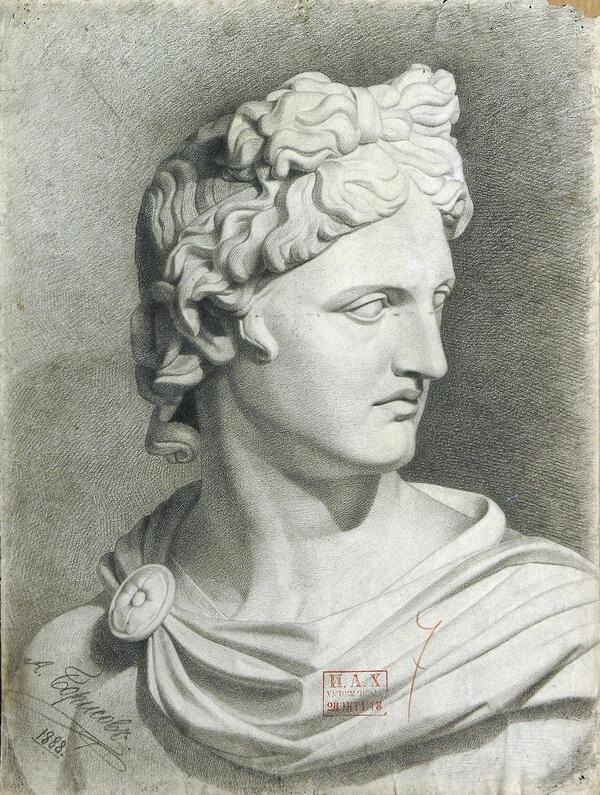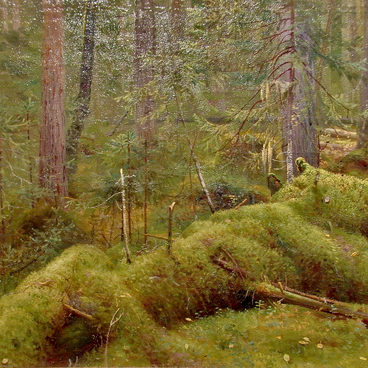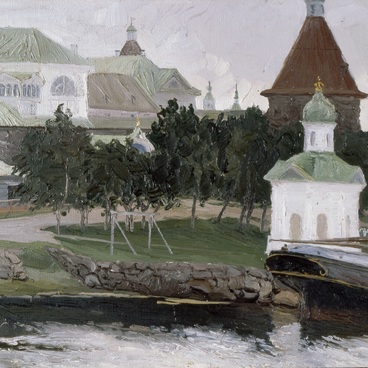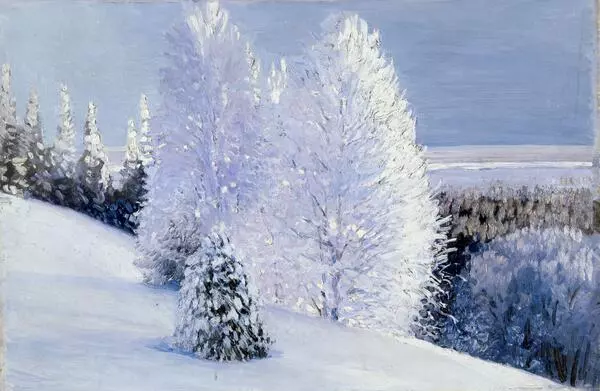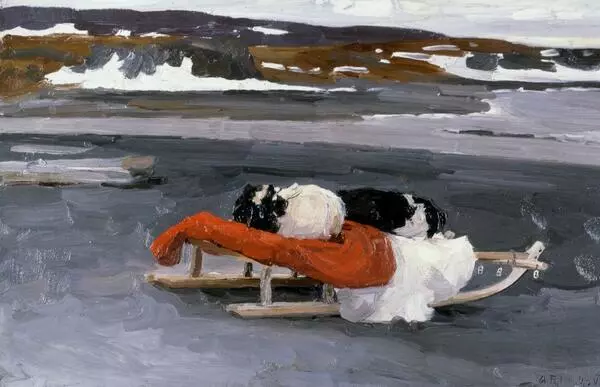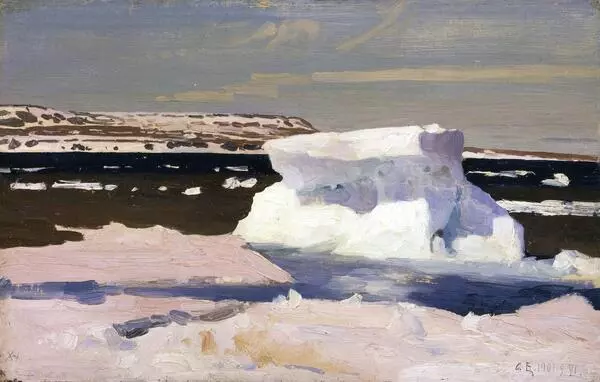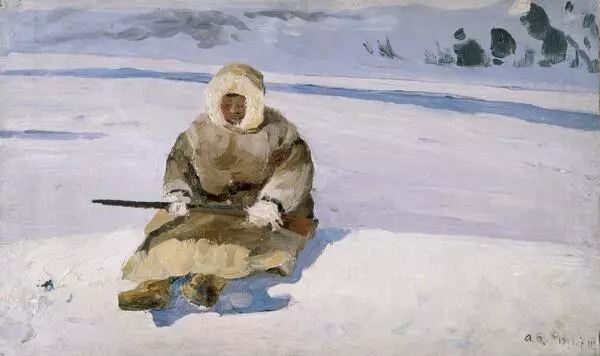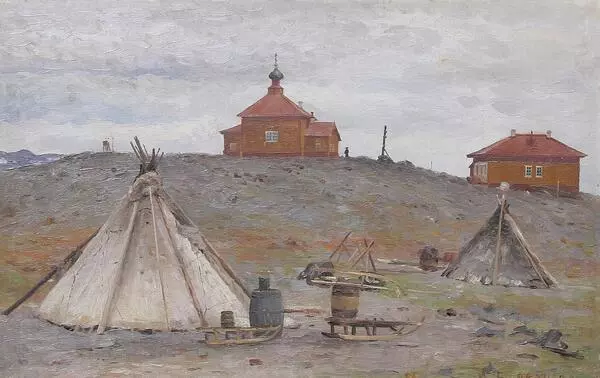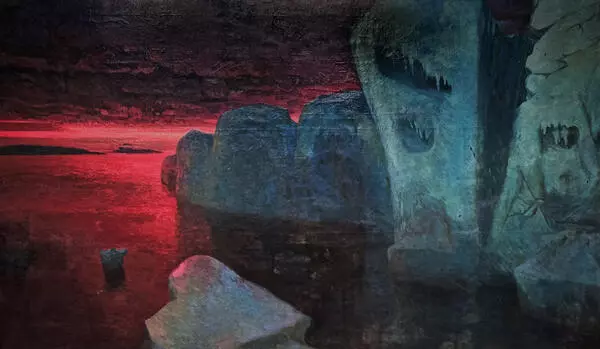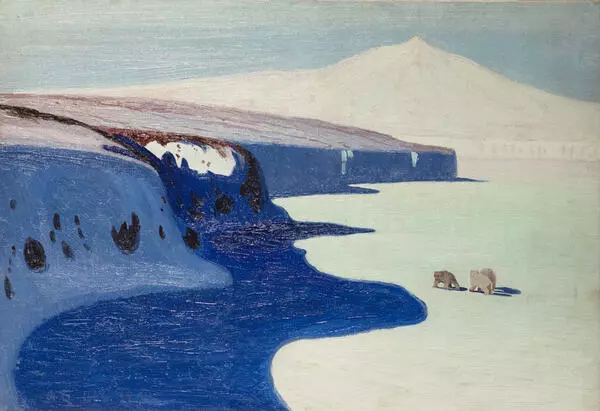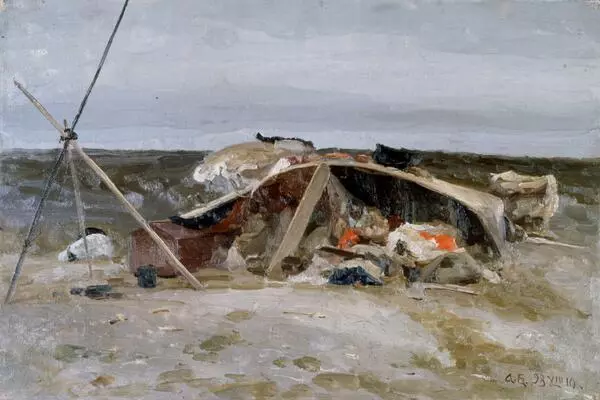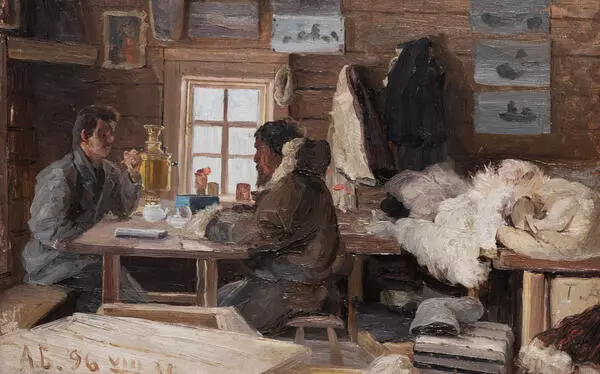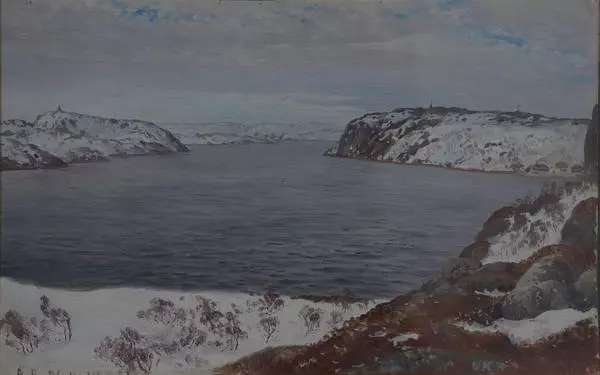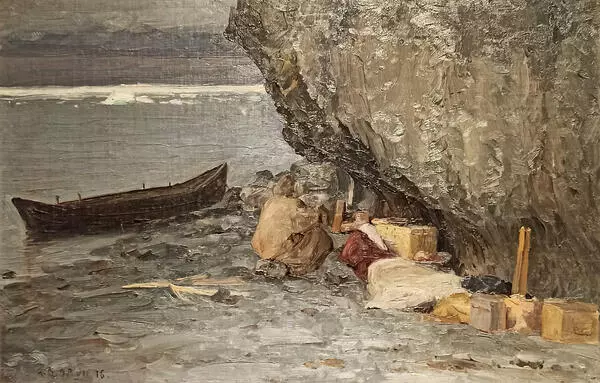After having completed his studies in Solovki’s painting studio, Alexander Borisov matriculated at the drawing school of the Imperial Society for the Encouragement of the Arts in 1887. The classes were held three times a week. There were a lot of students, and Borisov was the oldest and the least educated of them. Nevertheless, he successfully completed the drawing course in one year instead of three.
Being talented was not enough, you needed strong will and determination to succeed. Borisov was strict to himself and maintained harsh self-discipline, and thanks to that he could move forward fast. Hard work helped the young artist to build self-confidence, and in the summer of 1888, he decided to file a request to be allowed to participate in the entrance examination to the Imperial Academy of Arts.
Soon he was accepted as a non-degree student and assigned to a plaster busts class. Borisov was diligent and persistent in his studies. The fledgling artist’s achievements in 1888-1892 were rewarded with one large and two small commendation silver medals.
This work represents Apollo, god of the Sun. The neatness of the drawing, the curving strokes sculpting the face, the fine line detailing show the student’s diligence and are characteristic of all his works.
Plaster models representing ancient statues of Venus, Apollo, Niobe etc. are widely used in drawing classes. Thus, students can work on figures that exhibit elaborate, well-thought composition for as long as it takes. This is a complicated task. You have to find an observation point, grasp the latent movement, outline the shape keeping in mind what you’ve learned about human anatomy, understand how light is dispersed and distribute light and shadow on the drawing properly, follow the strokes and employ different types of hatching for different purposes. You have to think about all the details but always keep in mind the whole picture.
When we compare academic plaster models to Borisov’s drawings representing those models, it is obvious that he was a very talented draftsman.
Being talented was not enough, you needed strong will and determination to succeed. Borisov was strict to himself and maintained harsh self-discipline, and thanks to that he could move forward fast. Hard work helped the young artist to build self-confidence, and in the summer of 1888, he decided to file a request to be allowed to participate in the entrance examination to the Imperial Academy of Arts.
Soon he was accepted as a non-degree student and assigned to a plaster busts class. Borisov was diligent and persistent in his studies. The fledgling artist’s achievements in 1888-1892 were rewarded with one large and two small commendation silver medals.
This work represents Apollo, god of the Sun. The neatness of the drawing, the curving strokes sculpting the face, the fine line detailing show the student’s diligence and are characteristic of all his works.
Plaster models representing ancient statues of Venus, Apollo, Niobe etc. are widely used in drawing classes. Thus, students can work on figures that exhibit elaborate, well-thought composition for as long as it takes. This is a complicated task. You have to find an observation point, grasp the latent movement, outline the shape keeping in mind what you’ve learned about human anatomy, understand how light is dispersed and distribute light and shadow on the drawing properly, follow the strokes and employ different types of hatching for different purposes. You have to think about all the details but always keep in mind the whole picture.
When we compare academic plaster models to Borisov’s drawings representing those models, it is obvious that he was a very talented draftsman.

